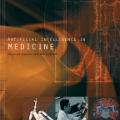Solving high-dimensional partial differential equations is a recurrent challenge in economics, science and engineering. In recent years, a great number of computational approaches have been developed, most of them relying on a combination of Monte Carlo sampling and deep learning based approximation. For elliptic and parabolic problems, existing methods can broadly be classified into those resting on reformulations in terms of $\textit{backward stochastic differential equations}$ (BSDEs) and those aiming to minimize a regression-type $L^2$-error ($\textit{physics-informed neural networks}$, PINNs). In this paper, we review the literature and suggest a methodology based on the novel $\textit{diffusion loss}$ that interpolates between BSDEs and PINNs. Our contribution opens the door towards a unified understanding of numerical approaches for high-dimensional PDEs, as well as for implementations that combine the strengths of BSDEs and PINNs. The diffusion loss furthermore bears close similarities to $\textit{(least squares) temporal difference}$ objectives found in reinforcement learning. We also discuss eigenvalue problems and perform extensive numerical studies, including calculations of the ground state for nonlinear Schr\"odinger operators and committor functions relevant in molecular dynamics.
翻译:解决高维部分差异方程式是经济学、科学和工程学中反复出现的一项挑战。近年来,已经开发了大量的计算方法,其中多数方法依赖于蒙特卡洛取样和深层学习近似值的结合。对于椭圆形和抛物线问题,现有方法可以大致归类为依靠重塑的方法,即$\textit{背对面差异方程式$(BSDEs)和旨在最大限度地减少回归型的$L2$-eror ($\textit{物理-知情神经网络$, PINNs) 。在本文中,我们审查文献并提出一种基于新颖的 $\textit{difulation损失} 的方法。对于BSDEs和PINNs之间交错的美元,我们的贡献为统一理解高维PDEs的数字方程式以及将BSDEs和PINNs的优势结合起来的实施打开大门。 扩散损失还类似于 $\ textitriit{late {late commondistrual developtional developmental divations fal developations lactions。我们还讨论了包括不相近似的磁值研究中的不相近似。




